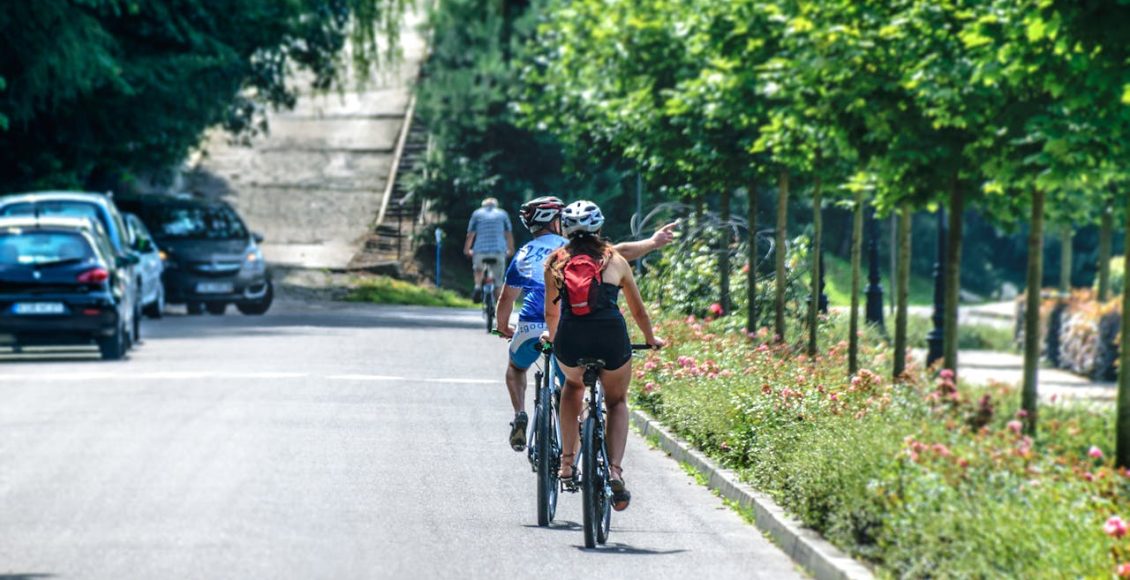Before moving to a new area, it’s smart to consider 8 Due Diligence Checks for Bike-Friendly Neighborhoods to ensure it’s the right fit for your cycling lifestyle.
For homebuyers and families who love cycling, not all neighborhoods are created equal. A “bike-friendly” community isn’t just one with a few painted lanes. It’s safe, connected, and thoughtfully designed for riders of all ages and abilities.
Whether you’re a commuter, weekend trail rider, or parent teaching a child to ride, a little due diligence before buying can help you gauge whether a neighborhood truly supports cycling as part of daily life.
Below are eight practical checks to help you assess how bike-friendly a neighborhood really is and how to make an informed decision about your next move.
1. Review Collision Heatmaps
Before you fall in love with a new area, look at available bicycle collision data. Many cities publish public crash maps showing where cycling incidents are concentrated.
These “heatmaps” can quickly reveal unsafe intersections, high-traffic corridors, or areas lacking proper crossings. Tools like Vision Zero maps or regional transportation dashboards often make this data accessible.
If you notice clusters of collisions near schools, shopping centers, or trail connections, that may indicate design flaws or insufficient traffic calming in those zones.
2. Ask About Traffic Calming Plans
Speed control measures, like roundabouts, speed humps, narrowed lanes, or raised crosswalks, help protect cyclists and pedestrians alike. When researching a new community, check local planning documents or ask the city’s transportation department about traffic calming initiatives.
Neighborhoods with active plans for safer streets are often ahead of the curve in promoting long-term cycling safety and livability.
3. Evaluate School Route Safety
If you have kids or plan to, take a close look at Safe Routes to School programs. These initiatives outline how children can walk or bike safely to school. Routes that include protected lanes, visible signage, and dedicated crossing guards indicate a community investing in family-friendly mobility.
4. Check Trail and Greenway Access
Bike-friendly living isn’t just about commuting. It’s about quality of life.
Proximity to multi-use trails, greenways, or scenic connectors can add real value to your home and enhance your recreation options. Explore local trail maps to see how easily you can access these amenities without loading your bike onto a car.
5. Audit Sightlines and Shoulder Width
When you’re touring a neighborhood, pay attention to the basics of street design: wide shoulders, consistent line markings, and unobstructed visibility around corners. A quick visual “sightline audit” can reveal whether drivers can clearly see cyclists and whether there’s enough space to ride safely without hugging traffic lanes.
6. Understand Liability and Post-Crash Steps
Even in the safest communities, accidents can happen. Before moving into a new area or commuting regularly by bike, it’s smart to understand local liability laws and the process for reporting crashes. This is especially important in smaller communities or rural towns where infrastructure may be limited.
For example, if you’re researching areas like Colfax in Placer County, having a resource such as a bicycle accident attorney Colfax can help you understand your rights, documentation steps, and available protections after a bike-related injury. Knowing these details upfront gives peace of mind as you evaluate different neighborhoods.
7. Evaluate Lighting for Night Rides
Good lighting isn’t just a comfort. It’s a safety necessity.
Well-lit intersections, consistent streetlights, and reflective signage make evening or early-morning rides safer. When possible, take a short drive or walk through the area at dusk to see how visibility changes after dark.
8. Look for Reported Hazard Logs
Many municipalities also maintain public hazard reporting systems, which means residents can easily log potholes, debris, or unsafe bike lane conditions. In addition, a neighborhood that actively reports issues and receives timely maintenance clearly signals a community that values rider safety. Furthermore, some regions go a step further by tracking how quickly reported hazards are resolved, thereby giving you deeper insight into how proactive and responsive local agencies truly are.
The Bottom Line
Choosing a bike-friendly neighborhood takes more than checking a map for bike lanes. It’s about looking deeper into infrastructure, planning, data, and community priorities.
A truly bikeable area offers more than convenience. It promotes sustainability, health, and stronger social ties.
By taking the time to evaluate these 8 Due Diligence Checks for Bike-Friendly Neighborhoods , you’ll not only find a safer place to ride. You’ll also find a community that values connection, active living, and long-term well-being.



Comments are closed.